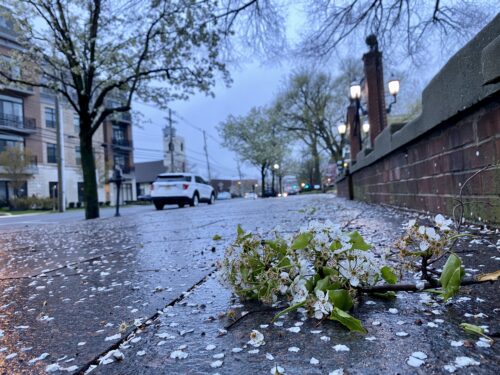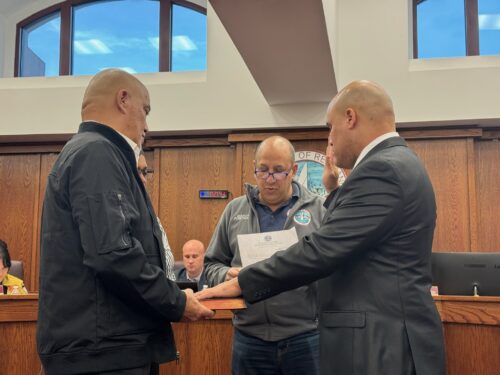
Proponents of a new historic district that would embrace Red Bank’s Washington Street neighborhood appeared to overcome the mild skepticism of about two dozen area residents who turned out at borough hall for a discussion on the topic last night.
Why, one resident wanted to know, did backers of the plan think they’d be able to attain their goal of district designation when, in the past, the borough council has been “hostile” to the idea?
“The atmosphere has changed dramatically in the last six or eight years” since the borough allowed the July, 2001 demolition of the Morford House, the site of one of the oldest taverns in the United States, to make way for the Commerce Bank branch on West Front Street, said Historic Preservation Commission George Bowden.
At the time, he said, only two members of the governing body opposed the demolition councilmembers Jennifer Beck and Pasquale Menna and one of them is now mayor.
Since then, he said, the HPC was created and given an advisory voice on every demolition permit and planning board application that might affect structures in the borough’s only current historic district, the core of the downtown.
“I think we’ve come a long way since then,” Bowden said, though he lamented that the commission is still “toothless” in that it cannot stop or impede development.
Asked why the council had opposed the formal creation of the district in the past, commission member Mary Gilligan suggested that one issue was the cost of winning the designation. But in the present effort, volunteers have done legwork and surveys that Menna has said would probably have cost the town $50,000 if done by professional consultants, Gillian noted.
The proposed district includes Washington, upper Spring Street, Mount Street and parts of Wallace and Mechanic streets. Much of the groundwork surveying of the district’s inventory was done prior to 1981, when the Monmouth County Historical Association designated the area as an historic district.
Now, said Bowden, the aim is to have the district incorporated by the borough council into the town’s master plan, now under review, and then to win state and national designations.
The rationale for the district is “to recognize, not regulate” the East Side neighborhood’s distinctive roots, layout and character, said commission member Ed Poplowki.
Modifications to home exteriors would not be subject to review. The county’s designation “has done nothing to restrict the resale or use of any of the houses in the district,” and a similar designation by the borough wouldn’t either, said Poplowski.
Rather, the designation would create a more cohesive sense of place and community, commission members said. In more tangible terms, it would enable the borough to seek grants for streetscape and other improvements, and, if a state income tax credit for improvements to historic homes is ever passed in Trenton, qualify district homeowners for the benefit.





















